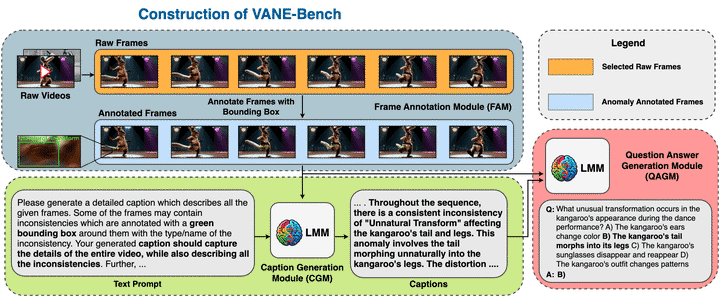VANE-Bench: Video Anomaly Evaluation Benchmark for Conversational LMMs

Abstract
The recent developments in Large Multi-modal Video Models (Video-LMMs) have significantly enhanced our ability to interpret and analyze video data. Despite their impressive capabilities, current Video-LMMs have not been evaluated for anomaly detection tasks, which is critical to their deployment in practical scenarios e.g., towards identifying deepfakes, manipulated video content, traffic accidents and crimes. In this paper, we introduce VANE-Bench, a benchmark designed to assess the proficiency of Video-LMMs in detecting and localizing anomalies and inconsistencies in videos. Our dataset comprises an array of videos synthetically generated using existing state-of-the-art text-to-video generation models, encompassing a variety of subtle anomalies and inconsistencies grouped into five categories, i.e., unnatural transformations, unnatural appearance, pass-through, disappearance and sudden appearance. Additionally, our benchmark features real-world samples from existing anomaly detection datasets, focusing on crime-related irregularities, atypical pedestrian behavior, and unusual events. The task is structured as a visual question-answering challenge to gauge the models' ability to accurately detect and localize the anomalies within the videos. We evaluate nine existing Video-LMMs, both open and closed sources, on this benchmarking task and find that most of the models encounter difficulties in effectively identifying the subtle anomalies. In conclusion, our research offers significant insights into the current capabilities of Video-LMMs in the realm of anomaly detection, highlighting the importance of our work in evaluating and improving these models for real-world applications. Our project website is live at link